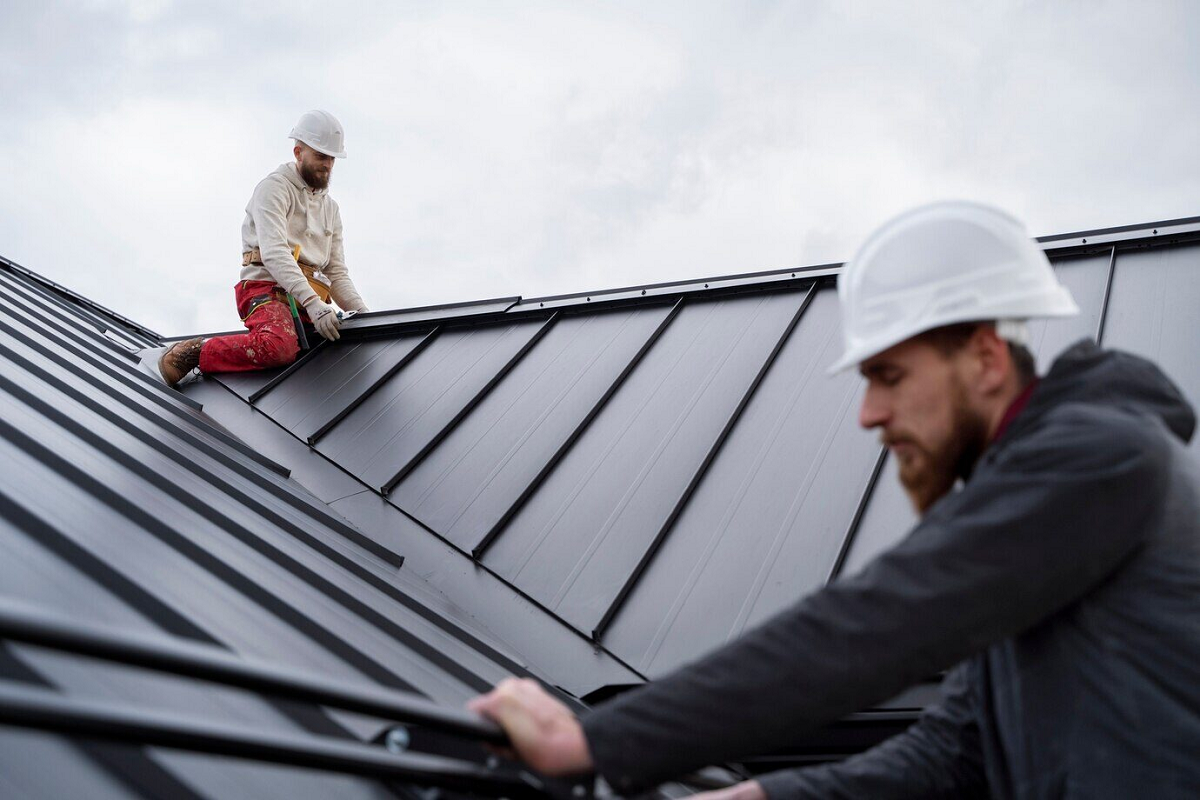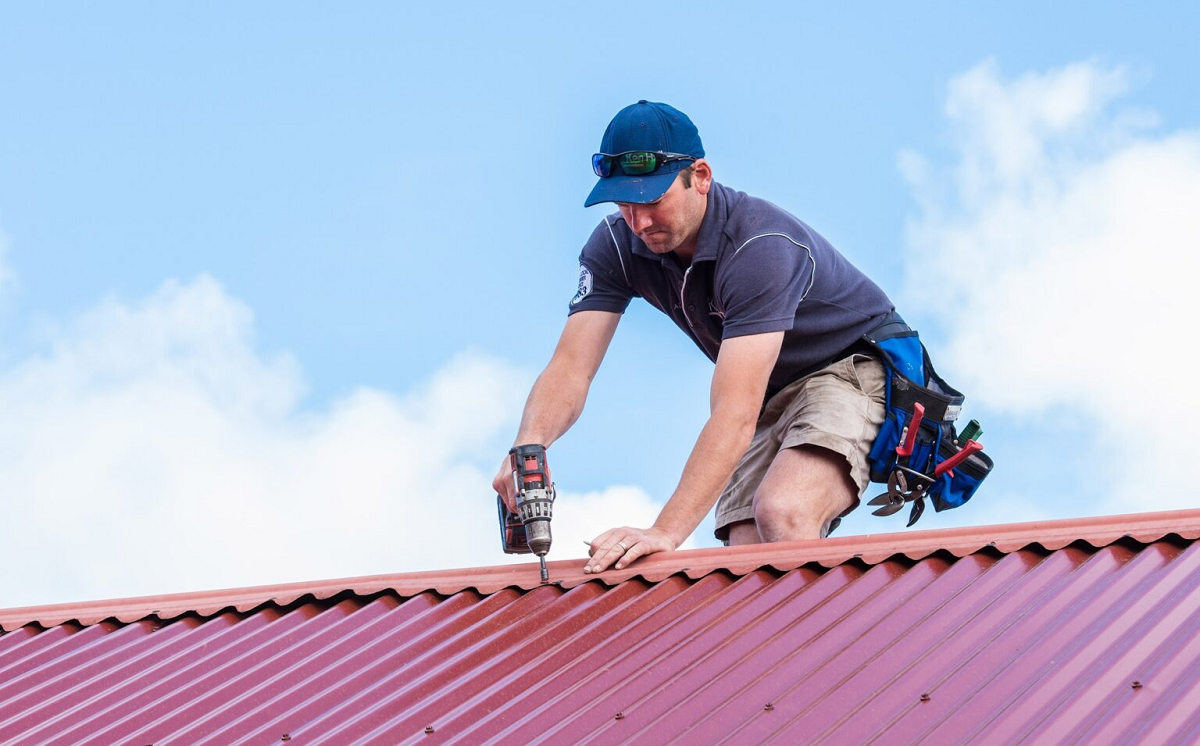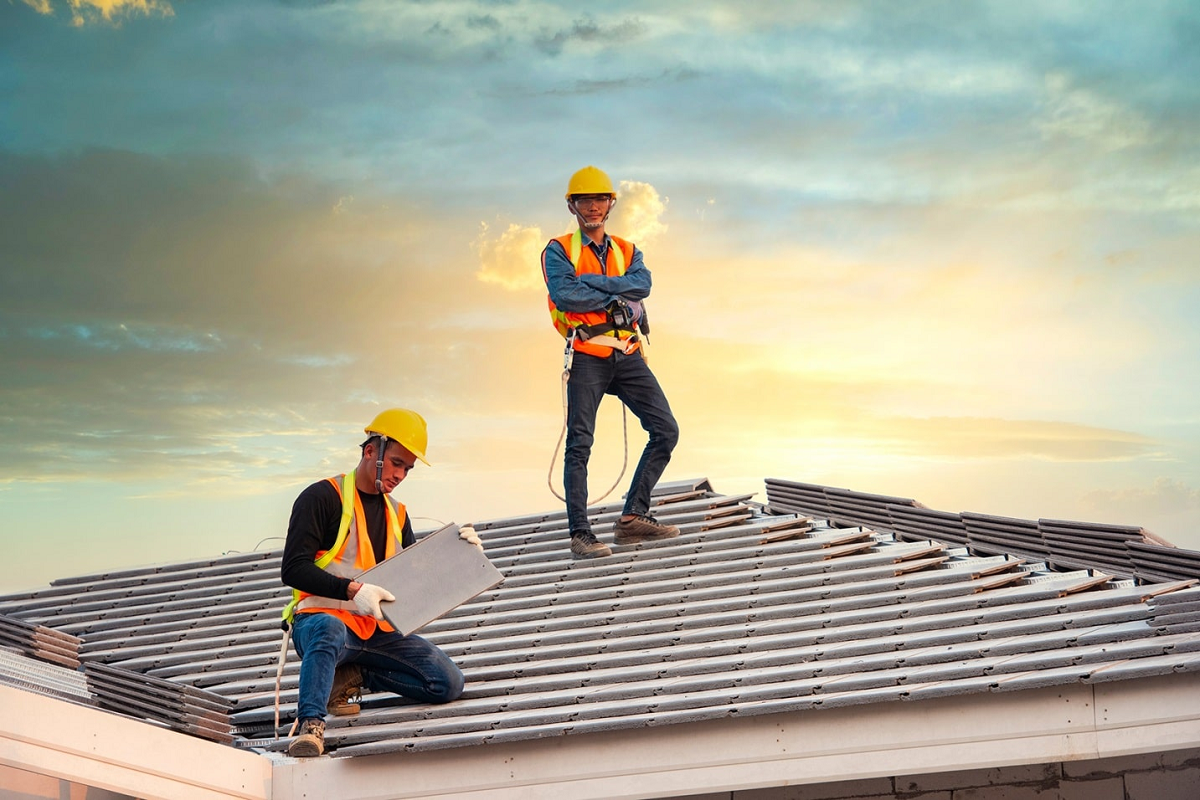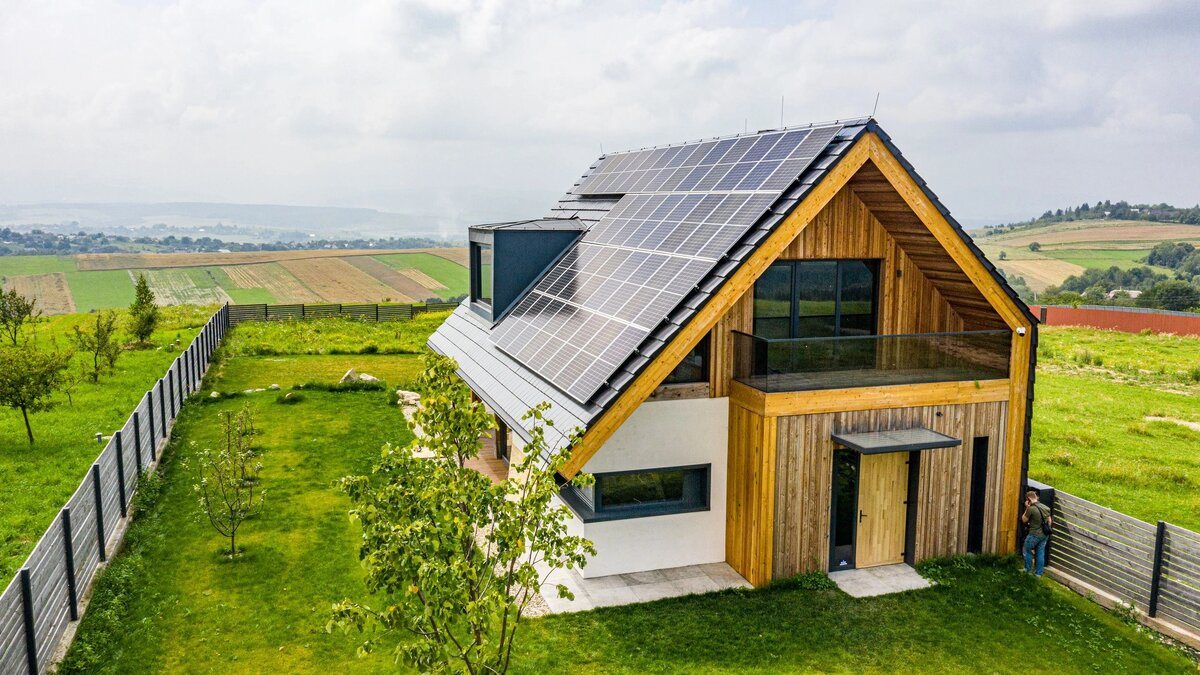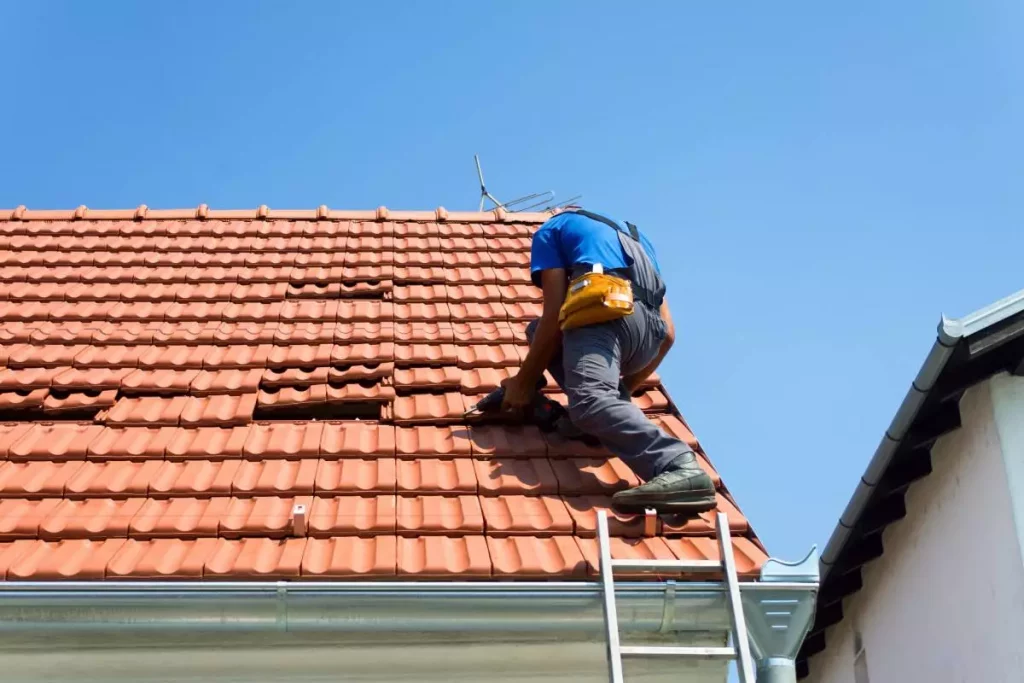CA. LIC#: 1075996
How Concrete Tiles are Revolutionizing Roofing Designs
Concrete tiles are reshaping the landscape of roofing designs, transforming how we perceive and utilize this crucial aspect of architecture. In construction and aesthetics, the rise of concrete tiles marks a revolutionary shift. These robust and versatile tiles have emerged as a game-changer, challenging traditional roofing materials with their durability, sustainability, and design flexibility. As we delve into the intricate world of roofing, let's explore how concrete tiles spearhead a design revolution beyond mere functionality.
The Rise of Concrete Tiles
Concrete tiles, often perceived as a modern marvel in roofing, have a history rooted in durability and resilience. Tracing their origins reveals a rich narrative of innovation dating back to [historical era]. Initially embraced for their robustness, these tiles have seamlessly transitioned from traditional to contemporary roofing, leaving an indelible mark on architectural landscapes.
Advantages of Using Concrete Tiles Over Traditional Roofing Materials
Concrete tiles have swiftly emerged as the preferred roofing material, outshining traditional counterparts in various aspects.
- Durability and Longevity: Concrete tiles boast unparalleled durability, standing the test against harsh weather conditions and environmental challenges. Unlike traditional materials that succumb to wear and tear, concrete tiles endure, offering a long-lasting solution for roofing needs.
- Weather Resistance: The inherent strength of concrete tiles makes them resistant to extreme weather conditions such as heavy rainfall, hail, and UV exposure. This resilience ensures that the roof remains steadfast in protecting the structure beneath, irrespective of the climate's whims.
- Energy Efficiency:
Concrete tiles contribute to energy efficiency by providing natural insulation. This insulation property helps regulate indoor temperatures, reducing the reliance on artificial heating or cooling systems. As a result, concrete tiles substantially impact energy conservation and operational cost savings.
Growing Environmental Awareness and the Role of Concrete Tiles
In an era marked by heightened environmental consciousness, the role of construction materials in sustainability cannot be understated. Concrete tiles align seamlessly with the burgeoning eco-friendly ethos of the construction industry. As more individuals and industries recognize the impact of their choices on the environment, concrete tiles have emerged as a conscientious option, offering both durability and sustainability. This dual advantage positions concrete tiles as a critical player in the global shift towards environmentally responsible building practices.
Innovative Roofing Designs with Concrete Tiles
Concrete tiles have revolutionized roofing in terms of durability and opened up a realm of possibilities for innovative and aesthetically pleasing designs. Here are five innovative roofing designs that showcase the versatility of concrete tiles:
- Mimicking Natural Elements: Concrete tiles can be molded and textured to emulate the appearance of natural materials such as wood, slate, or even marble. This design innovation allows homeowners to enjoy the aesthetic appeal of these materials without compromising on the durability and longevity offered by concrete.
- Geometric Patterns and Shapes: The flexibility of concrete tiles enables the creation of intricate geometric patterns and shapes. Architects and homeowners can play with various configurations, from hexagonal tiles to herringbone arrangements, adding a modern and visually striking dimension to roofing designs.
- Color Variety for Personalized Expression: Concrete tiles come in a wide array of colors, allowing for personalized expression in roofing designs. Whether opting for earthy tones to blend seamlessly with the surroundings or bold hues to make a statement, the diverse color palette of concrete tiles caters to a spectrum of design preferences.
- Mixed Material Combinations: Combining concrete tiles with other materials like glass or metal can result in truly unique and contemporary roofing designs. This fusion of materials enhances the visual appeal and allows for increased functionality, creating both distinctive and practical roofs.
- Eco-Friendly Green Roofs:
Concrete tiles can be part of innovative green roof designs, incorporating vegetation and sustainable elements. These eco-friendly roofing solutions provide insulation and contribute to environmental conservation, promoting
biodiversity and reducing the structure's carbon footprint.
Sustainability and Eco-Friendly Features of Concrete Tiles
As the global focus on sustainable living intensifies, the construction industry is undergoing a transformative shift towards eco-friendly materials. Once primarily valued for their durability, concrete tiles have now become pioneers in sustainable roofing solutions. Here's a closer look at the sustainability and eco-friendly features that make concrete tiles an environmentally conscious choice:
Concrete Tiles as a Sustainable Roofing Option
- Recyclable Composition: Concrete tiles comprise natural materials such as cement, sand, and water. This composition not only ensures durability but also makes the tiles highly recyclable. Concrete tiles can be repurposed at the end of their long lifespan, reducing the environmental impact of traditional roofing materials.
- Low Environmental Impact in Production: The manufacturing process of concrete tiles is known for its relatively low environmental impact compared to other roofing materials. The energy required for production is often less, making it a more sustainable choice. Additionally, advancements in production technologies continue to reduce emissions associated with concrete tile manufacturing.
Energy Efficiency and Insulation Benefits
- Natural Thermal Mass: Concrete tiles possess inherent thermal mass properties, allowing them to absorb, store, and release heat gradually. This natural thermal mass contributes to energy efficiency by stabilizing indoor temperatures and reducing the need for excessive heating or cooling. This, in turn, leads to lower energy consumption and operational costs.
- Cool Roofing Effect: The reflective surface of many concrete tiles contributes to the "cool roofing" effect. This feature minimizes solar heat absorption, preventing excessive heat buildup in the structure below. Cool roofing enhances energy efficiency and mitigates the urban heat island effect, positively impacting the surrounding environment.
Recyclability of Concrete Tiles
- Long Lifespan and Reduced Waste: Concrete tiles have a significantly longer lifespan than traditional roofing materials. This durability translates to fewer replacements over time, resulting in reduced waste generation. The extended life cycle of concrete tiles aligns with sustainable practices, minimizing the environmental burden associated with frequent roof replacements.
- Minimal Environmental Impact during Demolition: In the event of building renovations or demolitions, concrete tiles can be salvaged and recycled, further minimizing the environmental impact. This reusability aspect contributes to a circular economy approach, where materials are repurposed instead of ending up as waste in landfills.
Installation and Maintenance of Concrete Tile Roofs
Concrete tile roofs are renowned for their durability and aesthetic appeal, relatively straightforward installation, and minimal maintenance requirements. Understanding the nuances of installing and caring for concrete tile roofs is essential for maximizing lifespan and performance. Here's a comprehensive exploration of the installation process and maintenance considerations associated with concrete tile roofs:
Ease of Installation Compared to Other Roofing Materials
- Modular Design and Interlocking System: Concrete tiles are designed with a modular system that facilitates easy installation. The interlocking feature ensures a secure fit, reducing the risk of leaks and enhancing overall roof stability. This design characteristic not only simplifies the installation process but also contributes to the resilience of the roof structure.
- Lightweight Varieties Available: While concrete tiles have a reputation for durability, modern advancements have introduced lightweight variations, making them more manageable during installation. This adaptability allows easier handling, reducing the labor intensity traditionally associated with heavier roofing materials.
Maintenance Tips for Concrete Tile Roofs
- Modular Design and Interlocking System: Concrete tiles are designed with a modular system that facilitates easy installation. The interlocking feature ensures a secure fit, reducing the risk of leaks and enhancing overall roof stability. This design characteristic not only simplifies the installation process but also contributes to the resilience of the roof structure.
- Lightweight Varieties Available: While concrete tiles have a reputation for durability, modern advancements have introduced lightweight variations, making them more manageable during installation. This adaptability allows easier handling, reducing the labor intensity traditionally associated with heavier roofing materials.Regular Inspection and Cleaning: Routine inspections are crucial for identifying potential issues before they escalate. Periodically check for cracked or damaged tiles, loose fittings, and any signs of wear. Cleaning the roof surface from debris, moss, or algae helps maintain its appearance and prevents potential deterioration.
- Gutter Maintenance: Keep gutters and drainage systems clear of debris to prevent water accumulation on the roof. Proper drainage is essential for preventing water damage and ensuring the longevity of the concrete tiles. Regularly inspect and clean gutters to avoid clogs and water stagnation.
- Sealing and Coating: Applying a sealant or coating to concrete tiles can enhance their resistance to weather elements and UV rays. This protective layer acts as a barrier, preventing water infiltration and minimizing the impact of environmental factors on the tiles. Consult roofing professionals to determine the most suitable sealant for your specific tiles.
- Prompt Repairs: Address any issues promptly to prevent minor problems from escalating into more extensive, costly repairs. If you notice cracked or broken tiles, arrange for timely replacements. Ignoring minor damages can compromise the integrity of the entire roof.
- Professional Inspections: Periodically engage roofing professionals for comprehensive inspections. Professionals can identify hidden issues, assess the roof's overall condition, and recommend necessary maintenance or repairs. Regular professional inspections contribute to the long-term health and performance of the concrete tile roof.
Challenges and Considerations
Installing concrete tile roofs presents challenges and considerations that merit attention. The considerable weight of concrete tiles requires careful structural evaluation to ensure adequate support. Professional installation is imperative, as precise alignment is crucial for the interlocking system. While concrete tiles offer durability, addressing potential cracking due to structural settling is vital.
Homeowners should be aware that customization and intricate designs may increase costs. Additionally, misconceptions about the weight and fragility of concrete tiles require dispelling. Despite these considerations, proper planning, skilled installation, and routine maintenance can mitigate challenges, allowing homeowners to harness the benefits of concrete tiles in roofing applications.
Conclusion
In conclusion, the revolutionizing impact of concrete tiles on roofing designs cannot be overstated. Concrete tiles offer unparalleled durability, sustainability, and aesthetic possibilities from their historical roots to contemporary innovations. As homeowners increasingly seek roofing solutions that balance style and functionality, Avalon Roofing Services stands ready to usher in this new era. Our expertise in installing and maintaining concrete tile roofs ensures that your home benefits from both timeless elegance and modern resilience.
Contact Avalon Roofing Services at (209) 380-1275 or contact@avalonroofing209.com for inquiries or consultations. Visit our website at https://www.avalonroofing209.com to explore how concrete tiles can elevate the beauty and longevity of your home's roofing system. Choose Avalon Roofing Services for a roofing revolution that transcends expectations.
We are a licensed roofing contractor in Manteca, CA specializing in residential and commercial roofing services. We service Manteca CA, Lathrop CA, French Camp CA, Modesto CA, Mountain House CA, Tracy CA, and other surrounding cities.
Quick Links
© 2023 Content, including images, displayed on this website is protected by copyright laws. Downloading, republication, retransmission or reproduction of content on this website is strictly prohibited.

